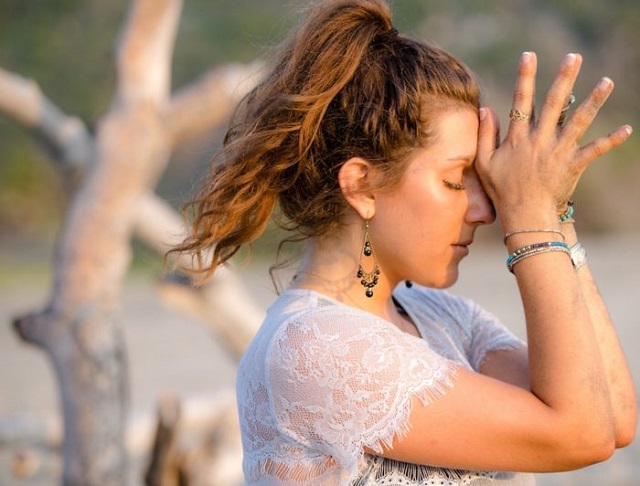
As a yoga teacher, people often talk to me about meditation and how frustrating it can be, or how bad they feel they are at it. They tell me how much they struggle to stop their thoughts and find that elusive place of complete stillness.
There are a few big misconceptions in regards to what meditation really is.
First of all, you can’t do it wrong, and you can’t be “bad” at it.
Second of all, it doesn’t have to be complicated. You don’t need quiet space, a cushion, or mala beads. You don’t need to travel to India, find a guru, or even consider yourself a spiritual person.
Lastly, the biggest misconception of them all is in trying to stop the never ending thought parade in order to arrive at a place of stillness.
Meditation is a process without a finite end-goal. It’s a practice that occurs with allowing subtle sensations to anchor us in the present moment and letting ourselves fully settle into our being. This can come from feeling the temperature of the air on our skin, tuning in to the natural rhythm of the breath, or noticing the support of the ground below.
It’s important to find a comfortable position you can relax in. It doesn’t matter whether it’s a formal cross-legged meditation position, sitting against a wall, or even laying flat on the ground—any position where the bones can settle heavily toward the earth, the muscles can relax, and the breath can become more fluid is good. When we’re positioned in a way that allows the body to relax, the breath naturally slows, the heart rate slows, and the amount of tension in the body begins to dissipate.
Everything in our awareness can become part of the meditation—from the sound of someone breathing next to us, to the construction we hear across the street, to the tingling in our foot that may be falling asleep if we’re new to the practice.
Instead of trying to stop any thoughts, emotions, or sensations from arising and trying to find stillness—meditation occurs when the trying stops.
Meditation is a process of allowing everything to be exactly as it is in this very moment. Including every thought, sound, and sensation in both our inner and outer world.
The key is in taking the seat of the observer and witnessing everything that’s occurring from a place of non-judgmental awareness. Notice anything that arises, but do so without attaching any story, reasoning, or judgment toward it.
In taking the seat of the observer, we shift from a state of doing into one of being. Our attention begins to naturally draw inward as we become mindful of our own awareness—moving out of the logical, linear, rational mind and into a state of soft receptivity.
One of the simple secrets of a meditation practice is approaching it with a sense of curiosity and adventure. As every component of this life is momentarily evolving, each time we meditate will be a completely different experience. Therefore, it helps to drop any expectations of how we think it should be, or how we think it should feel, as we curiously explore our inner domain.
As this practice is one of self-inquiry, personal transformation is inclined to effortlessly occur. Since what we share the most with the people is, in fact, our inner state—not only does meditation positively affect our own lives, but it truly benefits everyone around us.
Meditation gently refines our quality of awareness and our ability to listen, as well as cultivating a deeper understanding of who—or, better yet, what—we really are. Meditation doesn’t change the problems in in our lives, but it does change the perspective we approach them with.
Meditation doesn’t have to be a mystical, foreign, or complicated process. It can simply be just sitting with our sweet selves and allowing everything to be exactly as it is, in each and every moment. It’s a journey of the self and to the self—and each time we sit, it brings us a little bit closer home.
~
Author: Alexa Torontow

No comments:
Post a Comment